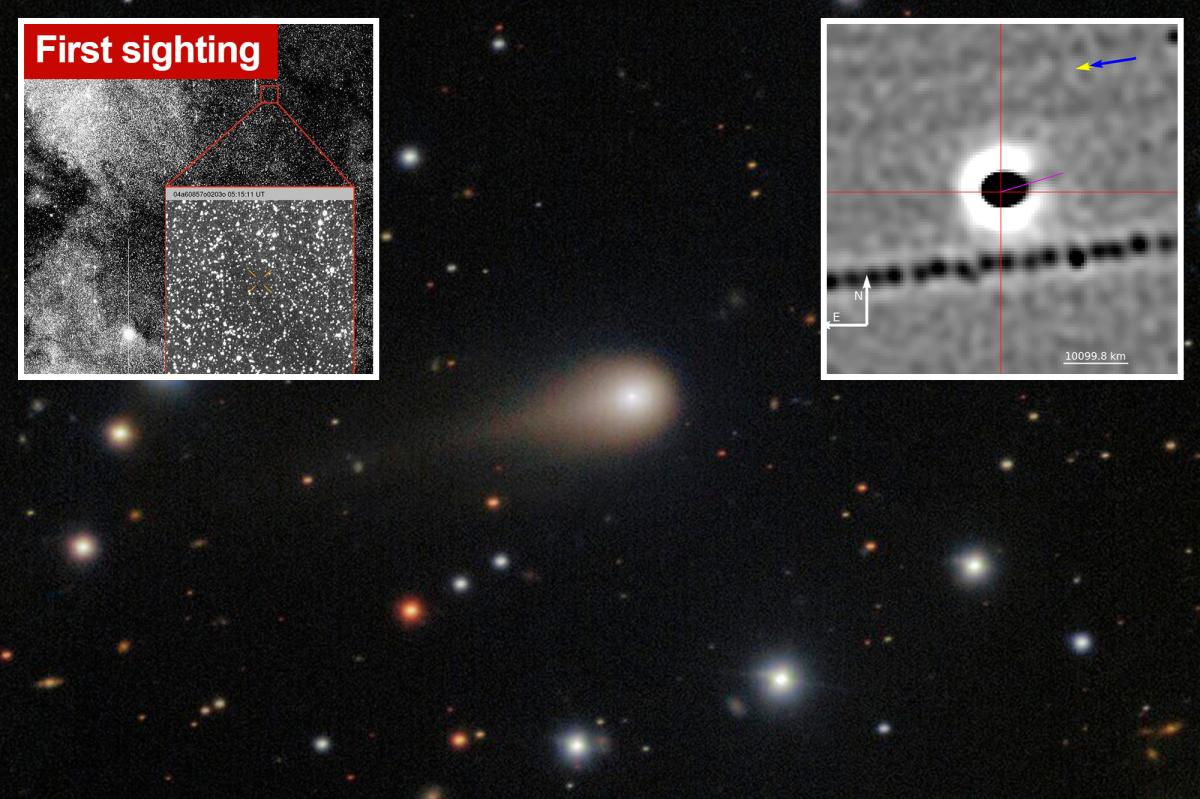They’re battening down the heavenly hatches.
A NASA-backed planetary defense group has reportedly begun efforts to pinpoint comet 3I/ATLAS after it was observed emitting an alloy not seen in nature and exhibiting other strange behaviors.
The cosmic anomaly — a Manhattan-sized interstellar object that potentially has alien tech — has been added to the list of threats by the International Asteroid Warning Network, a NASA-coordinated worldwide coalition of organizations and space experts who collaborate to detect and monitor potentially hazardous asteroids and Near-Earth Objects to assess their potential impacts to Earth.
3I/ATLAS is reportedly the first interstellar object to be targeted by their campaigns, prompting a campaign to hone detection skills and prep Earth for a potential threat from beyond.
3I/ATLAS has been added to the list of threats by the International Asteroid Warning Network, a NASA-coordinated worldwide coalition of organizations and space experts who collaborate to detect and monitor potentially hazardous asteroids and Near-Earth Objects to assess their potential impacts to Earth. AP
IAWN will be conducting a “comet campaign from November 27, 2025, through January 27, 2026” to refine methods for pinpointing 31/ATLAS’ (pictured) exact location. M. Serra-Ricart et al., October 15, 2025
The celestial object, which was first photographed by the Hubble Telescope on July 21, has notably displayed a host of unusual characteristics that seemed to defy normal comet behavior.
These included an anti-tail — a jet of particles that points toward the sun instead of away from it as is typical — and the fact that it was seen emitting a plume which contains four grams of nickel per second with no evidence of iron — a phenomenon unheard of in comets.
The alloy, nickel tetracarbonyl, has only been previously witnessed in human manufacturing, Harvard astrophysicist Dr. Avi Loeb told The Post.
Loeb also previously mentioned the object’s non-gravitational acceleration and anomalous trajectory that will bring it suspiciously close to Jupiter, Venus and Mars, which he pointed out — in a somewhat far-fetched paper — could indicate that it was alien probe sent to do recon on Earth.
This image shows the observation of comet 3I/ATLAS when it was discovered on July 1, 2025. ATLAS/University of Hawaii/NASA
In accordance, IAWN will be conducting a “comet campaign from November 27, 2025, through January 27, 2026” to refine methods for pinpointing ATLAS’ exact location.
“To prepare for the campaign, we will hold a workshop on techniques to correctly measure comet astrometry (a transformation without a change to a figure’s shape or size, such as rotation or reflection),” they wrote.
Needless to say, the development had X users quaking in their boots. “They’re calling it ‘a test of improved astrometry methods,’” fretted one. “In other words, the object isn’t behaving like it should.”
Thankfully, IAWN is currently treating the drill not like a call to enact interplanetary defenses, but rather a guide for stargazers hoping to get a better view.
Coincidentally, this development comes as 3I/ATLAS is just days away from making its closest approach to the Sun and slipping out of view.
Loeb postulated that this “maneuver” could be proof that the object is a spacecraft that’s using the gravity of the solar star to change speed and trajectory.
Ultimately, the fact that they activated said defense system indicates to the scientist that ATLAS, which astronomers concluded could measure 28 miles across, might not be a harmless comet.
“If 3I/ATLAS is a massive mothership, it will likely continue along its original gravitational path and ultimately exit the Solar system,” Loeb shared in a Sunday blog post.

